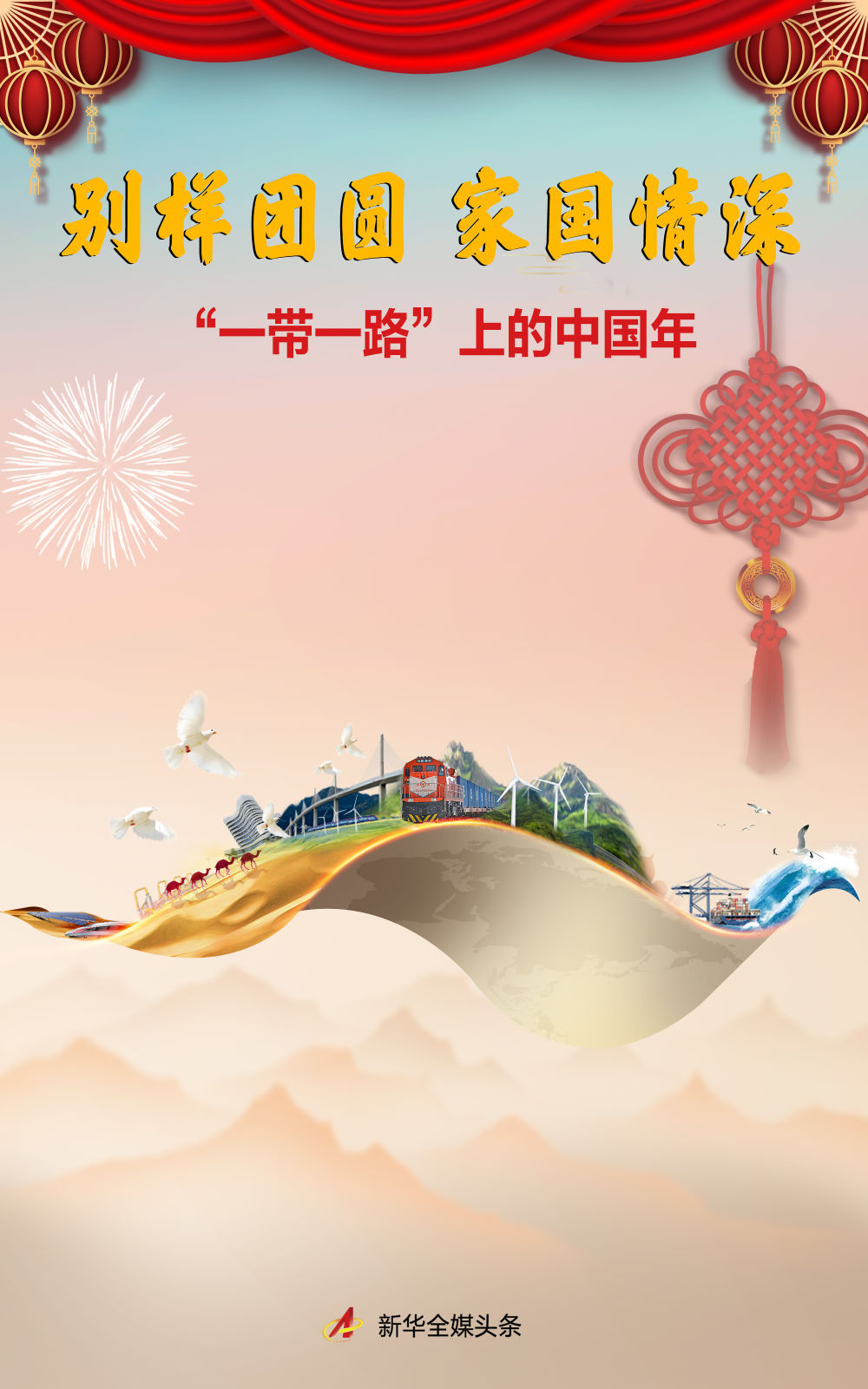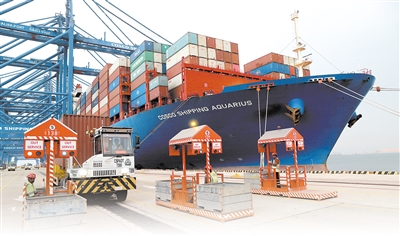Why Must Vietnam, Myanmar, Thailand, And Cambodia Continue To Be Jealous Of Laos’ China-Laos Railway?
Why Must Vietnam, Myanmar, Thailand, And Cambodia Continue To Be Jealous Of Laos’ China-Laos Railway?
This railway, with a total length of 1,035 kilometers, runs directly from Kunming to Vientiane. It was opened for operation on December 3, 2021. It has been running for more than three years, with a freight volume exceeding 50 million tons and more than 40 million passengers.
The China-Laos Railway, to put it bluntly, means that Laos has boarded the express train of China’s “Belt and Road Initiative” and transformed from a country surrounded by land into a transportation hub in Southeast Asia. This railway, with a total length of 1,035 kilometers, runs directly from Kunming to Vientiane. It was opened for operation on December 3, 2021. It has been running for more than three years, with a freight volume exceeding 50 million tons and more than 40 million passengers. Laos was originally the only landlocked country in Southeast Asia. It relied on roads and river transportation to get by, and exported minerals and agricultural products were always stuck at the border. Now that the railway is connected, logistics costs have dropped by 40%. Laos directly collects tolls, and its economy is booming. It’s not unreasonable for neighboring Vietnam, Myanmar, Thailand, and Cambodia to be jealous, because this road not only helps Laos unlock new ways to play, but also stirs up the trade pattern of the entire Indochina Peninsula, forcing these countries to recalculate their positions. If they continue to be jealous, it will actually be good for regional development. It will force everyone to speed up infrastructure construction, promote interconnection within ASEAN, and prevent Laos from becoming a dominant player and leaving others behind.
Let’s talk about Vietnam first. This country is close to Laos and has a long border. There has been some minor friction in history. Now that the China-Laos railway is open, Vietnamese goods have begun to use Laos to go north to China. For example, on January 29, 2025, the first batch of Vietnamese chilled octopus departed from the Long'an factory, was transported by truck to Charo Port, and then transferred to the Lancang-Mekong Express Line of the China-Laos Railway. It arrived in Kunming in four and a half days, one-third faster than sea transportation. This sounds like Vietnam is also benefiting, but in fact Vietnam is unbalanced because their own high-speed rail project is advancing slowly, and the Kunming-Hanoi railway is still in the planning stage. The China-Laos Railway has made Laos a transit point for Chinese goods going south, diluting Vietnam's original advantage of relying on ports and roads to transport goods.
Vietnam exports fruits and seafood to China, which originally took sea routes or roads. Now many cargo owners have switched to Laos railways, and Vietnam's port throughput may decline. Data show that after the opening of the China-Laos railway, Laos' trade volume with China doubled. Although Vietnam also grew, the growth rate was not as rapid. The Vietnamese government sees this and is eager to launch its own east-west high-speed rail line and want to connect it to the Pan-Asian Railway network, but there are huge financial and technical bottlenecks. If Vietnam were not jealous, it would not work so hard to catch up. The result would be a more balanced regional trade, benefiting everyone. To keep them jealous, Vietnam can be stimulated to increase investment, avoid being left behind by Laos, and form healthy competition.
The situation in Myanmar is even more embarrassing. The country's infrastructure is already weak, the roads are full of potholes, and everything is muddy during the rainy season. With the opening of the China-Laos railway, Laos is directly connected to China's high-speed rail network. If Myanmar's timber and ore exports wanted to go north, they could have taken their own path, but now many businessmen are bypassing Laos because the railway is faster and more stable. Although Myanmar's Kunming-Bangkok Highway connects Thailand and China, it is severely congested and has high freight costs. The China-Laos railway has made Laos a bridgehead connecting China and ASEAN. Myanmar’s planned western route, the Kunming-Yangon railway, has been stuck for many years, mainly due to political instability and funding problems.
As a result, the border trade towns in Laos became lively, while the border markets in Myanmar became a little deserted. The Myanmar government is jealous because they see Laos boosting tourism and logistics through railways. The number of tourists from Laos will surge in 2024, but Myanmar has fewer tourists due to internal problems. Data shows that the cargo transportation volume radiated from the China-Laos Railway to Myanmar is also increasing, but Myanmar itself does not get the lion's share. If Myanmar were not jealous, it would not restart its high-speed rail negotiations. As a result, the western front of the region would be lame. Maintaining a jealous state can force Myanmar to stabilize, attract foreign investment to build roads, and eventually connect it to the western branch of the Trans-Asian Railway, making trade across the Indochina Peninsula smoother.
Thailand has close relations with Laos, and border trade is active. Once the China-Laos railway is opened, Thai fruits and industrial products will go straight to the Chinese market. The railway from Bangkok, Thailand to Nong Khai is under construction and is planned to connect with the China-Laos Railway to form a central route from Kunming to Singapore. Thailand has benefited greatly, with shipping costs reduced by 25% and mangoes and durians kept fresh faster in China. But Thailand is also jealous because Laos has become a hub. Thailand was originally the ASEAN transportation center, but now it is diverted. Thai ports, such as Bangkok Port, were originally cargo distribution centers in Southeast Asia. Now that the China-Laos Railway has taken away some land cargo, Thai logistics companies are under great pressure. The Thai government is promoting the high-speed rail project, but the progress is slow and the funds are mainly funded by itself. The China-Laos Railway has greatly increased Laos' toll revenue. Thailand has seen this and is eager to improve its own lines. Data shows that in 2023, the cross-border freight volume of the China-Laos railway will be 4.41 million tons, with Thai cargo accounting for a large amount, but Laos will take a cut. If Thailand was not jealous, it would not be so active in connecting, and as a result, the central route was out of service. Continued jealousy can prompt Thailand to accelerate construction and form a complete pan-Asian railway axis, promote ASEAN economic integration and prevent Thailand from being marginalized.
Cambodia is located in the south and does not directly border Laos, but the influence of the China-Laos Railway is transmitted through the Lancang-Mekong Cooperation. The railway plan from Phnom Penh to Ho Chi Minh in Cambodia is planned to connect to the eastern route, but progress is slow. After the opening of the China-Laos railway, Cambodia's textiles and agricultural products began to travel north via Vietnam or Thailand and transferred to the Laos railway, shortening the logistics time. Cambodia is jealous because they see Laos transforming from a poor country into a transportation node. Cambodia's own infrastructure is backward, water prices are high, and industrial development is slow. The Cambodian government welcomes the “One Belt, One Road” initiative, but most of its projects are on roads and ports. The China-Laos Railway has improved Laos’ status, and Cambodia is worried about falling behind in ASEAN. Data shows that the China-Laos Railway carries more than 3,000 types of goods to Cambodia. Cambodia’s exports are growing, but not as fast as Laos. If Cambodia were not jealous, it would not ask China for assistance in building railways. As a result, the eastern route would be weak. Maintaining jealousy can stimulate Cambodia to increase cooperation and promote the completion of the entire Pan-Asian Railway, so that Cambodia can also share the trade dividends.
Looking at the overall situation, the China-Laos Railway is not only a matter for Laos, it is the central backbone of the Pan-Asia Railway, with the goal of connecting Kunming to Singapore and radiating throughout Southeast Asia. If Vietnam, Myanmar, Thailand, and Cambodia were not jealous, they would easily be satisfied with the status quo and not build their own branch lines. As a result, the entire network would be lame and trade efficiency would not improve. China's promotion of the "One Belt, One Road" initiative is to connect everyone and create a win-win situation. If you want to make them jealous, you can stimulate their competitive mentality and increase their investment in infrastructure to prevent one Laos family from becoming dominant and others becoming passive. Data shows that the China-Laos Railway has transported 48.65 million tons of freight in three years, covering 12 countries, and Laos’ economic transformation is rapid. If neighboring countries do not catch up, the gap within ASEAN will widen, which is not conducive to stability. Jealousy can also force policy adjustments, such as Vietnam strengthening trade with Laos, Myanmar stabilizing its political situation and seeking foreign investment, Thailand optimizing port logistics, and Cambodia promoting the Eastern Railway. These changes ultimately make regional trade more active, with Chinese goods moving south and ASEAN products moving north, and everyone benefits.
Through the railway, Laos has transformed from a land-locked country to a land-linked country. Its fiscal revenue has increased, factories have sprung up, and its exports have doubled. This allows neighboring countries to see the criticality of infrastructure. If they are not jealous, they will not reflect on their own shortcomings. Vietnam's high-speed rail planning is accelerating, Myanmar's western route is being renegotiated, Thailand's central high-speed rail is advancing, and Cambodia's eastern connection is asking for help. These are all motivations brought by jealousy. Regional competition is not a bad thing. It can promote balanced development and avoid the polarization between rich and poor. Among the ten ASEAN countries, Laos and Cambodia were originally weak, but now Laos is in the lead, and others can catch up with envy, forming a virtuous cycle. Data shows that after the launch of the China-Laos Railway international freight train, the cold chain transportation of fruits and vegetables is fast and the freight is low. The export efficiency of Yuxi's agricultural products has been greatly improved, which has radiated to surrounding areas.
To keep them jealous, the China-Laos Railway must continue to be upgraded. For example, adding double lines, increasing speed, optimizing products, expanding the capacity of Mohan Port, and upgrading customs. These make Laos' advantages more obvious and the surrounding pressure greater, so it will naturally take action. Finally, the Pan-Asian Railway is fully connected, and it takes 18 hours to travel from Kunming to Singapore. Trade volume is booming, and everyone benefits. If we were not jealous, the development of the entire Indochina Peninsula would be slow. The China-ASEAN free trade area has been upgraded, and the China-Laos railway is a model. Envy from neighboring countries can copy more projects and promote the deepening of Lancang-Mekong cooperation.
In general, the reason why Vietnam, Myanmar, Thailand, and Cambodia are jealous of the China-Laos Railway is not to create conflicts, but to use competition to stimulate vitality. Laos' success is a demonstration that others can copy if they are envious, thus avoiding regional disparity. Data shows that the China-Laos railway has promoted the growth of China-ASEAN trade volume, radiating to Thailand, Cambodia, Malaysia, etc. If they were not jealous, it would be easy for them to stagnate, and everyone would lose. If we continue to be jealous, it will lead to a situation where you are chasing each other, and ultimately interconnection will lead to a win-win economy. This is why they must be jealous. To put it more simply, it is to use envy to push everyone forward. Don’t let Laos stand out alone and let everyone get rich together.





